calsfoundation@cals.org
Forest Management and Conservation
The Dictionary of Forestry defines “forest management” as the application of biophysical and socioeconomic principles to predominantly tree-covered lands to meet specific objectives while maintaining productivity. To this end, forest management encompasses the art and science of manipulating timberlands for a range of renewable natural resources, including (but not limited to) wood products, wildlife, water, clean air, carbon storage, biodiversity, aesthetics, and recreation. Conservation has always been an integral part of forest management, although its definition has evolved over the decades as the practice of forestry has matured. Today, conservation has more of an emphasis on long-term sustainability, but during the earliest years of professional forestry, any effort related to the non-exploitive treatment of forests was considered conservation. In Arkansas, as in most of the rest of the United States, forest management and conservation arose quite literally from the ashes of exploitive lumbering.
Burgeoning populations and centuries of destructive use of Old World forests gradually led to the practice of sustainable forestry in Europe during the nineteenth century. However, Americans were later in recognizing the detrimental side of lumbering—the forests of the New World were generally viewed as limitless, so wasteful exploitation was not thought to be a problem. Furthermore, forests were generally considered obstacles to settlement and agricultural development. In Arkansas, significant land clearing began during the latter half of the nineteenth century and intensified into the early twentieth century. The peak year of lumbering in Arkansas occurred in 1909, when more than two billion board feet of lumber were sawed and billions more cut for other uses. Over the next two decades, lumber production began to decline, dropping to about 200 million board feet in 1932.
Declining harvests in the eastern United States in the 1910s and 1920s led to dire predictions of timber shortages, prompting state and federal agencies, private citizens, and even a few of the lumber companies to look for alternatives to the cut-and-get-out approach to lumbering. The practice of scientific forestry started in North America around the beginning of the twentieth century. The first large-scale federal conservation effort in Arkansas came with the withdrawal from the public domain of what would become the Arkansas (now Ouachita) and Ozark National Forests in 1907 and 1908, respectively. In 1912, Yale University professor Herman H. Chapman and one of his forestry classes examined some properties of the Crossett Lumber Company south of Crossett (Ashley County). Based on this inventory work, Chapman recommended protecting the forest from fire, retaining smaller trees for seed production and future harvest, and hiring a professional forester. During that same period, lumberman Henry Hardtner of Urania, Louisiana, advocated basic forestry principles to other industrial landowners. By 1922, the Crossett Lumber Company had hired its first professionally trained forester, W. K. Williams, and had begun to evaluate timber management alternatives as a means to prolong its harvesting. By the late 1920s, Edgar W. “Cap” Gates, manager of the Crossett Lumber Company, touted “perpetual operation” as his company’s new strategy—he had embraced the idea that forests could be “farmed” once the proper techniques were learned.
In 1921, the U.S. Forest Service opened the Southern Forest Experiment Station (headquartered in New Orleans, Louisiana) to assist landowners in the practice of sustainable forestry. Part of this effort included sending its workers across the region to help lumber companies and other landowners learn how to manage their properties. Russell R. Reynolds was dispatched in 1932 to help Leslie K. Pomeroy and Eugene P. Connor of the Ozark-Badger Lumber Company in Wilmar (Drew County) work on the economics of their “pine tree banking” approach. Shortly thereafter, Reynolds also began collaborating with the Crossett Lumber Company. It quickly became apparent that not enough was known to manage the southern pine forests of the region effectively, so the Crossett Lumber Company and the Southern Forest Experiment Station developed a plan whereby the company would donate land and the Forest Service would provide the research expertise. On January 1, 1934, the Crossett Experimental Forest opened its doors for operation with Reynolds at the helm. Over the decades, the research at Crossett and the other experimental forests in Arkansas has helped develop even- and uneven-aged silviculture in naturally regenerated forests and has guided landowners on the sustainable management of their forests.
The State of Arkansas also became involved with forest management and conservation efforts during the 1930s. In the early years, the primary mission of the Arkansas State Forestry Commission, now the Arkansas Forestry Commission (AFC), was to protect the forest from wildfire and to reforest lands denuded by lumbering, fire, agriculture, or development. Over time, other missions have been given to the AFC, including some regulatory work, prescribed burning, development of management plans for non-industrial private forest landowners, production of tree seedlings for planting, and community forestry assistance. The only forestry school in Arkansas was established at Arkansas A&M (now the University of Arkansas at Monticello) with a two-year degree offered in 1945 and a four-year degree in 1950. The University of Arkansas’s Agricultural Experiment Station has also offered forestry-related extension programs and publications for many years, and the Arkansas Forest Resources Center was established in 1994 as a Center of Excellence within the University of Arkansas system to study and support good forestry practices.
During the twentieth century, some lumber companies evolved from strict exploiters intent on leaving the state once their lands had been cut over to an industry interested in the long-term management of its forested properties. Over the years, industrial management strategies have shifted away from naturally regenerated forest stands to tree plantations. As a result, these plantations, typically of genetically improved loblolly pine (Pinus taeda), have increased dramatically from approximately 55,000 acres in 1952 to just over 2.94 million acres in 2005. The companies that dominated the industry during the mid- to late-1900s have since largely sold their forestlands to investment-based organizations, or have converted to these structures themselves. Increasingly, forestry practices in Arkansas include more intensive site preparation techniques (for example, chemical competition control, ripping and bedding, fertilization) and more precise regulation of stand stocking through lower planting densities and early thinnings.
Most of the major industrial/investment and non-governmental (for example, the Nature Conservancy) landowners in Arkansas adhere to the standards and practices of one or more forest certification programs designed to ensure protection of environmental and cultural resources while permitting commercial forestry practices. A small minority of non-industrial private forest landowners belong to these certification programs, and there are few laws regulating land management activities on private property. Not surprisingly, wide-ranging disparity remains in the sustainability of forestry on non-industrial private lands. Only a fraction of small private landowners seek forestry advice from for-profit forestry consultants, organizations such as the Arkansas Forestry Association or the Nature Conservancy, public agencies such as the AFC, or industry-based management assistance programs.
An important aspect of forest conservation is the long-term protection of lands from human influences such as logging or agriculture, often to preserve rare species, significant natural features (for example, caves or old-growth forests), or water quality. Across the state of Arkansas, protected forest reserves have been established by numerous public and private landowners. In addition to those in Hot Springs National Park and along the Buffalo National River, notable examples of these reserves include more than 116,000 acres of officially designated wilderness on national forests where no timber harvesting or motorized vehicles are permitted. Over the last century, thousands more forested acres on national wildlife refuges have been assembled out of smaller parcels of farmland, timber operations, and even hunting camps to protect habitat for key wildlife species. For example, following the 2005 rediscovery of the ivory-billed woodpecker (Campephilus principalis) in the “Big Woods” of eastern Arkansas, thousands of acres of lands were acquired directly or protected via conservation easements by the Nature Conservancy and other interested parties. The Arkansas Natural Heritage Commission, working with both private and public landowners, has also established a statewide network of more than 51,000 acres of protected habitats, many of which are forested.
Good forestry practices and appropriate conservation measures have stabilized Arkansas forest cover at about 18 million acres, with an estimated 27 billion cubic feet of timber volume statewide. As of 2010, projections over the next few decades forecast a modest increase in forest cover and continued accumulation of wood as tree growth still exceeds harvesting. During this period, more naturally regenerated forests are likely to be converted to plantations, and some forests will be lost to agricultural expansion and residential development. Forest management and conservation are also likely to be affected by the climate change predicted to occur in Arkansas, but the nature and magnitude of change (if any) are still uncertain.
For additional information:
Baker, James B., and Larry M. Bishop. Crossett Demonstration Forest Guide. General Report R8-GR 6. Atlanta, GA: USDA Forest Service, Southern Region, 1986.
Bragg, Don C. “Percy George and The Pine Tree Menace.” Arkansas Historical Quarterly 69 (Winter 2011): 346–367.
Brewer, George S. “Timber, Arkansas’ Leading Resource.” Southern Lumberman 193 (December 15, 1956): 153–156.
Gray, George W. “The Forest Lives on in this Lumber ‘Camp’ Built for Permanence, Part II.” Forest Echoes 14 (May 1954): 13–15.
Helms, John A., ed. The Dictionary of Forestry. Bethesda, MD: The Society of American Foresters, 1998.
Lang, Fred H. “Two Decades of State Forestry in Arkansas.” Arkansas Historical Quarterly 24 (Autumn 1965): 208–219.
Reynolds, Russell R. The Crossett Story: The Beginnings of Forestry in Southern Arkansas and Northern Louisiana. General Technical Report SO-32. New Orleans, LA: USDA Forest Service, Southern Forest Experiment Station, 1980.
Rosson, James F., and Anita K. Rose. Arkansas’ Forests, 2005. General Technical Report SRS-166. Asheville, NC: USDA Forest Service, Southern Research Station, 2010.
Wear, David N., and John G. Greis, eds. Southern Forest Resource Assessment. General Technical Report SRS-53. Asheville, NC: USDA Forest Service, Southern Research Station, 2002.
Don C. Bragg
USDA Forest Service
Southern Research Station


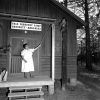
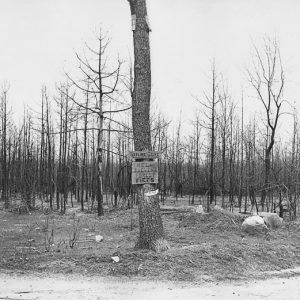 Arkadelphia Fire
Arkadelphia Fire  Crossett Experimental Forest
Crossett Experimental Forest 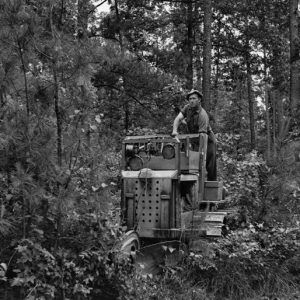 Fire Plow
Fire Plow 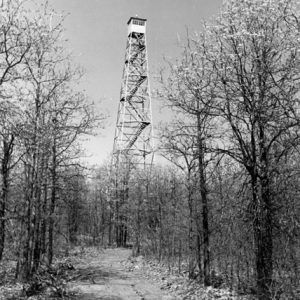 Fire Tower
Fire Tower 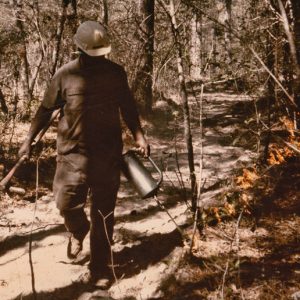 Setting Backfire
Setting Backfire 



Comments
No comments on this entry yet.